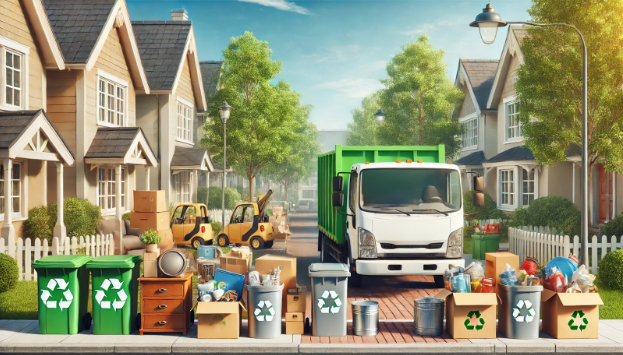
Recycling Unwanted Items – A Comprehensive Guide
Wondering what to do with old furniture, electronics, or
household junk
piling up in your home?
Recycling unwanted items is an
eco-friendly
way to declutter while helping reduce landfill waste. In this post, we'll cover how you can recycle, reuse, and responsibly dispose of your unwanted items, making a positive impact on the planet.
Why Recycling Unwanted Items Matters
Recycling is crucial for conserving resources and reducing pollution. When we toss items in the trash, they often end up in landfills, releasing harmful greenhouse gases. By recycling, we not only save space in landfills but also conserve natural resources and reduce the energy required to manufacture new products.
Benefits of Recycling Unwanted Items
Recycling unwanted items not only helps the environment but also offers personal benefits. Here’s a quick look at why recycling should be a priority:
- Reduced Environmental Impact: Fewer items in landfills mean less pollution and a smaller carbon footprint.
- Conservation of Resources: Recycling materials like metal, plastic, and paper conserves natural resources and energy.
- Improved Mental Well-being: Decluttering can be a therapeutic process, reducing stress and making spaces more functional.
- Supporting Communities: Donated items often go to people in need or benefit community programs, creating a positive social impact.
Common Household Items You Can Recycle
Let’s break down some common household items and how you can recycle or responsibly dispose of them:
| Item | Best Way to Recycle | Notes |
|---|---|---|
| Furniture | Donate to charities or refurbish | Most furniture can be repurposed or donated. |
| Electronics | E-waste recycling centers | Electronics contain hazardous materials. |
| Clothing | Donate, upcycle, or recycle bins | Many charities accept gently used clothing. |
| Appliances | Contact recycling services | Many appliances have metal that can be recycled. |
| Plastics | Follow local recycling guidelines | Not all plastics are recyclable; check with your provider. |
Furniture
Furniture items such as couches, tables, and chairs are often reusable. Consider donating these items to local charities or thrift stores. If donation isn’t an option, you could even upcycle them with a DIY project, giving old furniture a new look and a new life.
Electronics
E-waste contains harmful chemicals that can leach into soil and water if not properly disposed of. Many electronics stores and municipal recycling centers offer e-waste recycling services for items like old TVs, computers, and smartphones.
Clothing and Textiles
Old clothing can be donated, repurposed, or even sold. If the items are too worn, consider using them as cleaning rags or finding a textile recycling program. Some brands and retailers also offer take-back programs for recycling old clothes.
Step-by-Step Guide to Recycling Unwanted Items
- Identify Recyclable Items
Start by sorting items into categories like electronics, furniture, clothing, etc. Knowing what can and can’t be recycled will save time and prevent you from accidentally throwing away valuable recyclables. - Research Local Recycling Centers
Many cities have specific drop-off points for items like electronics, batteries, and metals. Check with your local waste management facility or search online to find nearby recycling centers. - Choose Donation Over Disposal
If your items are in good condition, consider donating them to a local charity, shelter, or thrift store. Many organizations even offer free pick-up services, making it easy for you to give back. - Consider Upcycling
Get creative with upcycling projects! For instance, you could turn an old dresser into a bookshelf or repurpose glass jars as storage containers. Upcycling reduces waste and lets you enjoy unique, custom-made pieces. - Separate Hazardous Materials
Batteries, paints, chemicals, and light bulbs should never be thrown in the trash. These items contain hazardous materials and must be disposed of according to local regulations. - Recycle What Can’t Be Reused
For items that cannot be reused or donated, follow proper recycling protocols. Separate plastics, metals, and paper, and dispose of each according to your local recycling rules.
FAQs on Recycling Unwanted Items
Q: Can I recycle broken electronics?
A: Yes, broken electronics can be recycled at e-waste recycling centers. Be sure to remove any personal data before recycling.
Q: Are there items I can’t recycle?
A: Certain items like plastic bags, Styrofoam, and hazardous waste (batteries, chemicals) are generally not accepted in curbside recycling bins. Look for specialized facilities for these items.
Q: What should I do with old appliances?
A: Large appliances, like refrigerators and washing machines, can often be picked up by recycling companies. Some retailers offer take-back programs when you buy a new appliance.
Q: How can I recycle clothing that’s too damaged to donate?
A: Many textile recycling programs accept damaged clothes. You could also use them as rags or for DIY projects if recycling isn’t available.
